Gluten-Free Lumpia Wrappers: How to Make and Perfect Them at Home
Today we are going to Discuss Gluten-Free Lumpia Wrappers. Lumpia is an incredibly popular appetizer or snack throughout many Southeast Asian homes, especially in the Philippines. Generally, these crispy and savoury rolls are made using thin, crepe-like wrappers that are often stuffed with combinations of meats, vegetables, or seafood fillings. Unfortunately, for those who cannot have gluten-based products due to celiac disease, gluten sensitivity, or a personal choice, traditional lumpia wrappers can be a challenge to find. Fortunately, we have gluten-free lumpia wrappers.
So, do you have to make gluten-free lumpia wrappers as opposed to buying them? While the simple answer is no, it’s not just to accommodate a dietary gluten-free lifestyle; it’s because, if you make them, you will get them fresher and tastier. When you make lumpia wrappers from scratch, you also control the level of goodness contained in the wrapper.
Gluten in Traditional Lumpia Wrapper
What does gluten do in a traditional lumpia wrapper?
For traditional lumpia wrappers, gluten acts as a binding agent. It gives the dough the elasticity that forms a nice, smooth, pliable texture that you can roll against without tearing. The most common base for lumpia wrappers is all-purpose flour from wheat flour, which contains gluten. Water is combined with gluten to create a sticky and stretchy network in the dough while providing strength and flexibility.
Why gluten in traditional Lumpia wrappers?

The ability gluten gives the dough to be elastic is very important for creating thin paper-like wrappers that remain strong enough to hold fillings but yet delicate and crispy when fried. If you can tolerate gluten, traditional lumpia wrappers work well, but dump those if you have gluten sensitivity or celiac disease. Definitely will need gluten-free alternatives if you want to enjoy this delightful Filipino appetizer.
The Necessity of Gluten-Free Options
Widespread Gluten Sensitivities and Celiac Disease
Gluten intolerance is coming more into recognition than in years before. The emergence of illnesses such as celiac disease, in which ingesting gluten essentially destroys the small intestine, has heightened the demand for gluten-free options. Additionally, in non-celiac gluten sensitivity, individuals may also experience symptoms such as bloating, headaches, or digestive discomfort after consuming gluten-containing foods.
Health-Related Benefits of Being Gluten-Free
Being gluten-free is not just for allergies or intolerances. Many find that less gluten in their diet produces better digestion, clearer skin, and more consistent energy levels. When it comes to lumpia, making gluten-free wrappers allows everyone — at least all eaters, regardless of gluten intolerance — to enjoy this crunchy, savoury snack.
Gluten-Free Lumpia Wrappers: Peeking At the Ingredients
Standard Ingredients in Gluten-Free Recipes
Gluten-free wrappers use alternative flours to replicate the texture and elasticity of the wheat-based wrapper. The goal is to have a mixture of flour, starches, and binders to achieve a pliable dough that can surround a different filling. Some of the most popular gluten-free lumpia recipes include:
Rice Flour: Lightweight and gluten, rice does a nice job providing a neutral flavour and supporting gluten-free processes.
Tapioca Starch: Sometimes referred to as tapioca flour, tapioca starch has elastic, stretchy characteristics to replicate the functions of gluten.
Potato Starch: When frying, potato starch adds a crispy element to the lumpia.
Xanthan Gum or Psyllium Husk: Added as binders in the dough to hold it together and not crumb off while pre- and post-cooking.
Knowing Your Gluten-Free Flours
For the most part, gluten-free flours will impart a different texture or quality to the dough. Rice flour is generally soft, being slightly gritty, tapioca starch and potato starch can contribute to the elasticity and added crispiness. Properly compiling each one is important to make the best gluten-free lumpia wrappers.
Step-By-Step Directions for Preparing Gluten-Free Lumpia Wrappers at Home
Equipment You Will Need
- Non-stick frying pan or crepe maker
- Spatula
- Rolling pin
- Mixing bowls
- Whisk
- Complete Recipe and Directions
Ingredients:
- 1 cup rice flour
- ¼ cup tapioca starch
- 2 tablespoons potato starch
- 1 teaspoon xanthan gum
- 2 large eggs
- 1 cup water
- ½ teaspoon salt
- 2 tablespoons oil.
Instructions:
1. In a separate dish, first of all, combine all the dry food components- rice flour, tapioca starch, potato starch, xanthan gum and salt
2. Preparing wet components really means: In a different dish, beat eggs well. Next, add it to the previously mixed batch with the attached water and the oil and then stir the beaten cake mixture properly with the help of an egg maker to remove any lumps
3. It seems like such a soaring aspiration, but what that looks like is Resting batter: Allowing the batter to rest for 15 minutes — just enough so that the flour fully hydrates and microgluten structure can develop, forming supple wrappers.
4. For wrapping: Take a non-stick frying pan and heat in moderate flame, pour few amount (1/4 cup or slightly) of white batter on the surface by keeping the frying pan in a slanting position so that it covers all over as we do for making dosa. When the edges of the batter rise and firm, turn over the dough and cook for another 30 seconds.
Let Cool and Cover: After cooking the leaves, put them one time, then lay a damp cloth over them to prevent them from drying out.
Rolling the Dough:
If you’re a first-time lumpia maker, you may find it difficult to roll the dough at first. The goal is to spread the batter thinly and evenly, so the wrappers will have some stretch…without tearing. It does get easier the more you practice.
Troubleshooting Common Issues
Sticky or Crumbly Dough
Rice flour can be added in case the dough becomes too sticky or a drop or two more of water or oil can be added to shore elasticity if it becomes crumbly.
Wrappers that Crack or Break
Dryness is often called the cause for wrappers to crack. Wrap them with a damp cloth to preserve moisture while you are using them.
The Art of Rolling Lumpia
How to Roll Lumpia Properly
After you’ve cooked your wrappers, the next step in rolling lumpia is to fill them with the vegetables. Placing a small spoonful of the mixture close to one border of the wrapper would be a good strategy for a start, but it should be rolled around the sides and then pulled tight, thus letting all the filling be sealed in its place. Seal the edge with some water or egg whites.
Tips for Preventing the Wrappers from Tearing
Make sure the filling isn’t too wet; this will be a cause of tearing. Ensure the wrappers are slightly cooled before rolling if they are very fragile.
Gluten-Free Lumpia Fillings to Try
Classic Fillings: Pork, Vegetables, and Shrimp
Ground pork, carrots, onions, and green beans are the most common ingredients used in classic lumpia. Chocolate fillet or tofu may also be added for change.
Vegan and Vegetarian Options
For the vegan version, go with smaller and thin-cut mushrooms, and tofu, or pick a few regular vegetables.
Creative Fillings for a Modern Twist
Be bold by following the newly adapted recipes or alternate the ways with the traditional chicken fillings, freshly cooked vegetables at high temperature, or the choice of a zesty sausage, which leads to a different taste.
Storing and Reheating Gluten-Free Lumpia Wrappers
Storing Unused Wrappers
Wrap up any unused wrappers in an air-tight container or zip-lock bag. Place them in the refrigerator where they will last for a couple of days.
Freezing and Thawing Instructions
To freeze, place the wrappers, separated by wax paper, in a freezer-safe bag. To use, thaw at room temperature.
Serving Gluten-Free Lumpia
Pairing Lumpia with Gluten-Free Dipping Sauces
Lumpia is also typically served with sweet chilli, vinegar-soy and garlic dipping sauces. Just check your soy sauce is gluten-free.
Why Gluten-Free Lumpia Makes a Great New Option for Entertaining
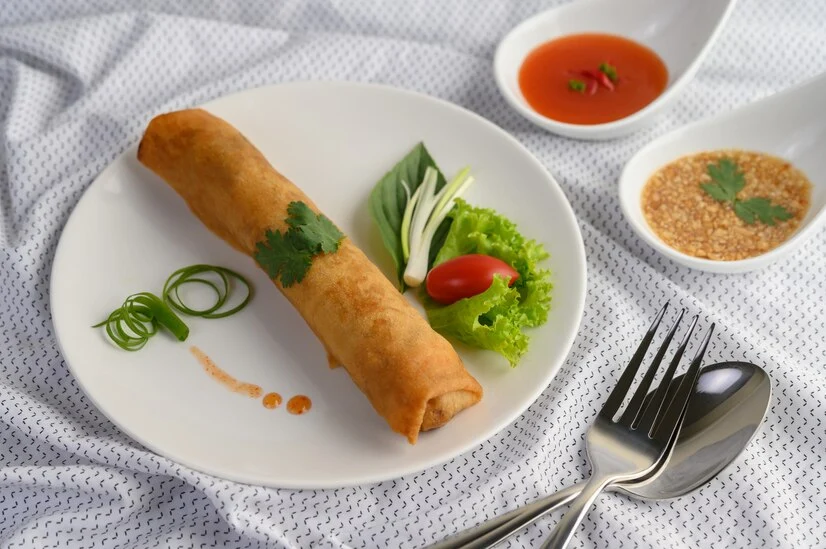
Lumpia is a popular appetizer with everyone at gatherings. You can make gluten-free lumpia and then everyone enjoys the Filipino favourite, even someone with dietary restrictions.
Store-Bought Gluten-Free Lumpia Wrappers
Are They Worth It?
As easy as gluten-free wrappers from the store are, homemade is usually fresher and more authentic.
Popular Gluten-Free Brands to Try
There are several brands of gluten-free lumpia wrappers, including Spring Home and TYJ, available at local Asian grocery stores and online.
Additional Ingredients to Consider for Your Gluten-Free Lumpia Wrappers
Outside of the base ingredients, there are a few additions that could help improve texture or flavour. These may not be found in all recipes, but can distinctly elevate the experience:
Coconut Flour: As you’ll remember from before, a small amount (no more than 1-2 tablespoons) will add a sweet note to the wrapper and complement savoury fillings.
Arrowroot: Arrowroot can also perform the same thickening function as tapioca starch and can give a crispness to the lumpia when fried. Prefer leurs milder flavour.
Chickpea Flour: For just a little more protein and slight nuttiness, you can add a small amount of chickpea flour – and it will help give a sturdier wrapper making it better for frying.
These flour conversions or additions will add additional versatility, so enjoy playing with flavours and ingredients that work well and suit dietary needs.
The Process of Making Gluten-Free Lumpia Wrappers
gluten-free lumpia wrappers can only be made with precision at every stage of preparation. Any minor mistakes encountered along the way can create busting wrappers that are not quite as thick and runny and, if the recipe is improper, can break apart easily when frying. Let’s take one step further into each process to appreciate gluten-free lumpia wrappers fully.
1. Blend and Hydrate the Batter
Once you have mixed the oral flours and starches, it is vital to properly whisk your wet and dry areas. We are aiming for a smooth, lump-free batter, but just thinner than pancake batter consistency so that it has the potential to create paper-thin wrappers if you spread it thin enough in the pan.
Key Tip: Allow the batter to rest for a minimum of 15-20 minutes before cooking. To rest the batter will ensure that the gluten-free flours are properly hydrated. This will create some elasticity and reduce the likelihood that the lumpia will crack or break when you roll it. If after resting, the batter is still too thick to work with, add water by the tablespoon until it is thinner.
2. Achieving the Perfect Thickness
Thickness It can be complicated to get the perfect thickness for gluten-free lumpia wrappers. You want them to be thin enough to create crispness when frying, but at the same time, not so thin that they easily tear when rolled. Here is a quick and easy test:
Using the ladle or measuring cup, pour the batter into your pan (use a non-stick pan or crepe pan, if you have them). At that point, you should swirl the batter around right away so that the batter can coat the bottom evenly. The idea is to do this very quickly so that the batter does not start to clump anywhere.
If you continue to have issues and the wrappers are too thick, you may want to limit the batter in the pan or thin the batter down more. Conversely, if it is excessively thin and easily tears, you are either using too little batter or it is undercooked.
Key Tip: If you’re having trouble with consistency, utilize a silicone brush to spread the batter more uniformly around the pan. This will aid in the batter being spread evenly and not be thick in spots.
3. Managing the Temperature
When heating up gluten-free lumpia wrappers, the key is managing heat. If the pan is too hot, the wrappers will cook way too quickly, and you may end up with a brittle wrapper before getting the opportunity to flip it. On the contrary, if it is too cool it will leave the wrapper undercooked, doughy and likely to break. Most of the time medium heat should work out fine, but it always helps to keep an eye on it and adjust accordingly.
Key Tip: Make sure you cook each wrapper just long enough that they begin to pull away from the pan along the edges and the surface appears to be mostly set. If when flipped, the wrapper is too dry it will break open, If waiting on the surface can still be tacky they possibly need more time. It’s really all about timing.
Alternatives (Creative Gluten-Free Flour for Lumpia Wrappers)
If you prefer gluten-free substitutes that are even more nutritious, maybe you can start playing around with flour alternatives.
Check these out:
Sorghum Flour: An ancient grain that is gluten-free, with a mild sweet flavour, it is fantastic for lumpia wrappers. Sorghum flour is also a great source of fibre and antioxidants.
Buckwheat Flour: Even though it’s called buckwheat it is gluten-free. Buckwheat has a unique, but slightly earthy flavour which has more nutritional benefits than rice flour by itself.
Teff Flour: Teff is a grain found in Ethiopian cooking, it is gluten-free, and high protein and fibre source. Teff has a nuttiness that can provide your lumpia wrappers with an interesting savoury flavour.
Each flour is going to give your gluten-free lumpia wrappers a flavour and texture twist. Feel free to try it at home and enjoy it.
Advanced Methods for Rolling and Sealing Gluten-Free Lumpia
Once your gluten-free wrappers are made, your next big task is rolling and sealing them properly. Gluten-free wrappers can sometimes be more fragile than wheat-based wrappers so here are a few expert advice to keep your lumpia in one piece:
1. Fillings Moisture Balance
Perhaps one top reason that gluten-free lumpia wrappers tear is because the filling is too moist. When using meat, vegetables or sauce in your fillings, make sure you drain off any excess moisture from the filling. You might also consider cooking the filling ahead of time and allow it to slightly cool which allows additional moisture to evaporate. If using high water-filled vegetables such as cabbage or zucchini, consider sautéing these filling ingredients ahead to help remove excess moisture from the vegetables.
Key Tip: Make your filling into a small, even mound adjacent to the edge of the wrapper before rolling. This makes rolling and folding the sides much easier and you will avoid breaking the wrapper.
2. Proper Rolling
When rolling the lumpia without tearing the wrapper, use the following steps to keep the roll tight without tearing the wrapper:
- Place wrapper utensil on a clean surface, flat.
- Add about 2 tablespoons of filling towards the bottom edge.
- Once the filling is added fold the bottom over to enclose/ tuck the filling snugly.
Then fold in the sides sealing along the edges to secure the lumpia while worrying your fillings oozing out of the lumpia at sealed joints.
Following the step by holding the wrapper, simply roll it up tightly applying even pressure and avoiding excess stretching of the wrapper.
Key Tip: At the seam, brush a bit of water or egg wash just slightly along the knitted seam before finishing up the rolling process. This will act as “glue” to help secure the fillings and lumpia roll completely.
Achieving Perfection with Gluten-Free Lumpia for Different Cooking Techniques
In general, lumpia is traditionally deep-fried, however, gluten-free wrappers are affected differently by various cooking methods. Here are suggestions for properly cooking Lumpia whether frying or baking.
Frying
Deep frying is still the most traditional way to cook lumpia, and gluten-free wrappers will be crisp and golden if cooked properly. However, many gluten-free flours will brown more quickly than wheat-based wrappers. To avoid burning, fry gluten-free lumpia at slightly lower temperatures (approximately 350°F) and be vigilant while frying.
Important! The oil must be at the correct temperature before you add the lumpia. If the oil is too hot, the wrappers will blister and burn before the filling is completely cooked. If the oil is cool, the wrappers will absorb the oil and become greasy instead of crispy.
Baking or Air Frying
If you are looking for a healthy option, gluten-free lumpia can also be baked and air-fried with fantastic results! To keep the lumpia crispy, you should just lightly brush the lumpia with oil on all sides before baking or air frying. You can get the iconic crunchiness of frying without all the calories.
Important! If baking in an oven, bake at 400°F for 20 – 25 minutes flipping at least halfway through for even colour and cooking. If you are using an air fryer, your lumpia will be golden and crispy in 8 – 10 minutes, because air fryers tend to heat faster than ovens you should check at 6-7 minutes.
Conclusion
The rewards of making gluten-free lumpia wrappers from home are well worth it. Rolling out the wrappers is so easy that even with a little practice, anyone can learn to make it like a pro. And the people who can’t eat conventional lumpia wrappers? They will be so excited to enjoy this Filipino spring roll.
Also Read: Is Rum Gluten-Free? An In-Depth Guide for Gluten-Sensitive Drinkers
FAQ’s
Is it possible to utilize a pre-packaged gluten-free lumpia wrapper?
Yes, various companies sell gluten-free lumpia wrappers, but a homemade version is usually superior in terms of flavour and texture.
How will I prevent the gluten-free wrappers from breaking?
Only proceed to rolled-up food pieces once the batter is sufficiently mixed and the wrappers are kept moist with a damp cloth.
What is the best gluten-free flour to use for lumpia wrappers?
The recommended combination to closely replicate the texture of traditional wrappers is a mixture of rice flour, tapioca starch, and potato starch.
Can gluten-free lumpia wrappers be frozen?
Yes, you can thaw frozen gluten-free lumpia wrappers at room temperature, then make your lumps with them and include them! To freeze, add parchment paper between each of the wrappers to prevent them from sticking together!
Are gluten-free lumpia wrappers a healthier option than traditional lumpia wrappers?
Gluten-free lumpia wrappers will be healthier for an individual who has gluten sensitivities, and they may lower inflammation for certain individuals in this context.
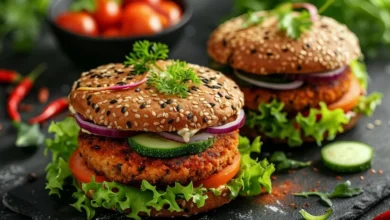
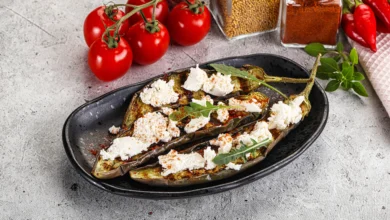
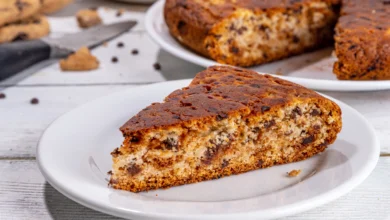
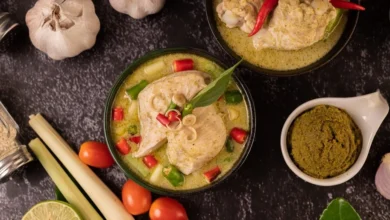
4 Comments